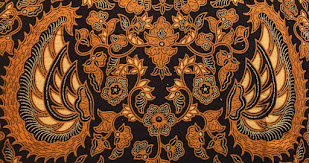Tombak Baru Klinting: Traditional Artwork with Mystical Power
- History and Function of the New Klinting Spear in Indonesian Culture
- Expert Skills in Creating Quality New Klinting Spears
- The Symbolic and Philosophical Meanings Behind the New Klinting Spear Ornaments
- Innovation in the Design and Manufacture of New Klinting Spears
- Preservation and Development of Traditional Art Through Spear Baru Klinting
A. History and Function of the New Klinting Spear in Indonesian Culture
The Klinting spear is a traditional weapon that originates from Indonesia, and is known for its unique design and cultural significance. The history and function of this weapon in Indonesian culture are both fascinating and complex.
Historically, the Klinting spear was used as a weapon in warfare, as well as for hunting and self-defense. Its design features a long, slender shaft with a pointed metal tip that can pierce through armor or animal hides. The Klinting spear was also used in traditional dance performances, where its movements were incorporated into the choreography.
However, the Klinting spear is not just a weapon - it is also imbued with symbolic meaning in Indonesian culture. It is considered a symbol of strength, courage, and honor. The intricate designs and ornamentation on the spear also hold deep significance, representing various aspects of Indonesian spirituality and mythology.
Today, the Klinting spear is still an important part of Indonesian culture, and is often displayed in traditional ceremonies and cultural events. Despite its historical significance, the Klinting spear is also being adapted and modernized for contemporary use, with new designs and materials being incorporated into its construction.
B. Expert Skills in Creating Quality New Klinting Spears
Creating a high-quality Klinting spear requires expert skill and knowledge in the traditional techniques of metalworking and weapon-making. The process of crafting a Klinting spear is highly intricate and requires a deep understanding of the properties of various metals and alloys.
The creation of a Klinting spear begins with the selection of high-quality raw materials. The blade is typically made from iron or steel, which is then heated and shaped by a skilled blacksmith using a variety of techniques such as forging and hammering. The shaft is usually made from wood, which is carefully chosen for its strength, flexibility, and resistance to warping.
The blacksmith responsible for creating the Klinting spear, known as an "empu", must possess a high level of technical skill and knowledge. They must be able to accurately gauge the temperature of the metal to ensure it is not overheated or under-heated, as this can result in a weakened or damaged blade. They must also be able to create a symmetrical and well-balanced design that is both functional and aesthetically pleasing.
In addition to technical skill, the creation of a Klinting spear also requires a deep understanding of the cultural and spiritual significance of the weapon. The empus who create Klinting spears often incorporate intricate and symbolic designs into the blade and shaft, which may represent various elements of Indonesian culture and mythology.
Overall, the creation of a high-quality Klinting spear requires a combination of technical skill, knowledge of materials, and an understanding of cultural and spiritual significance. The result is a weapon that is not only functional, but also beautiful and deeply meaningful.
C. The Symbolic and Philosophical Meanings Behind the New Klinting Spear Ornaments
The ornaments on the Klinting spear are not just decorative, but also hold deep symbolic and philosophical meanings that are significant in Indonesian culture. The ornaments are often intricate and detailed, featuring a range of designs and symbols that represent various aspects of Indonesian spirituality and mythology.
One of the most common symbols found on the Klinting spear is the dragon or naga. In Indonesian mythology, the naga is a powerful and benevolent creature that is associated with water and is often depicted as a guardian or protector. The naga is believed to bring good fortune and is often associated with royalty or high social status.
Another common ornament found on the Klinting spear is the lotus flower. The lotus is a symbol of purity, enlightenment, and spiritual growth in many cultures, including Indonesia. The lotus is often depicted with multiple petals, which represent the different stages of spiritual development.
The ornaments on the Klinting spear may also feature geometric patterns, such as circles and squares, which represent unity and balance. These patterns are often used to symbolize the harmony between the physical and spiritual realms.
The overall design of the Klinting spear is also significant, as it is meant to represent the balance and harmony between opposing forces, such as light and dark, good and evil, and male and female. The shaft of the spear represents the masculine force, while the blade represents the feminine force. The balance between these forces is believed to be essential for achieving harmony and balance in all aspects of life.
In conclusion, the ornaments on the Klinting spear hold deep symbolic and philosophical meanings that are significant in Indonesian culture. These symbols and designs represent various aspects of spirituality, mythology, and the balance between opposing forces, and serve to reinforce the cultural and spiritual significance of this traditional weapon.
The design and manufacture of new Klinting Spears have undergone significant innovation in recent times. While the basic form and function of the Klinting spear remain the same, new designs and materials have been introduced to enhance the weapon's functionality and aesthetic appeal.
One significant innovation in the design of the Klinting spear is the incorporation of new materials, such as carbon fiber, into the shaft of the weapon. Carbon fiber is an extremely lightweight and durable material that is resistant to bending and warping. By using carbon fiber in the shaft, the overall weight of the weapon can be reduced while maintaining its strength and balance.
Another innovation in the design of the Klinting spear is the introduction of new blade shapes and styles. Traditionally, the blade of the Klinting spear was straight and double-edged, with a sharp point at the tip. However, new designs have emerged that incorporate curved blades, serrated edges, and other features that enhance the weapon's cutting and thrusting capabilities.
The manufacturing process of the Klinting spear has also undergone innovation, with the introduction of modern technologies such as computer-aided design (CAD) and 3D printing. These technologies allow for more precise and efficient production of the weapon, reducing the time and cost of manufacture while maintaining quality and consistency.
In addition to these technical innovations, the Klinting spear has also undergone creative innovations in its decoration and ornamentation. Modern empus have introduced new designs and styles that incorporate contemporary aesthetics while still maintaining the traditional symbolism and meaning of the weapon.
Overall, the innovation in the design and manufacture of new Klinting Spears reflects the evolution of Indonesian culture and technology. While still grounded in tradition and history, the new Klinting spear embodies the spirit of innovation and creativity that continues to shape the Indonesian identity.
E. Preservation and Development of Traditional Art Through Spear Baru Klinting
The Baru Klinting spear is not only a weapon, but it is also a significant cultural and artistic representation of Indonesia. It is a tangible expression of the country's rich heritage and traditional arts, passed down from generation to generation. Therefore, the preservation and development of traditional art through the Baru Klinting spear is crucial to maintain its cultural value and significance.
The preservation of traditional art involves documenting and safeguarding the techniques and processes used to make the Baru Klinting spear. This includes not only the technical aspects of forging and crafting the weapon but also the cultural and spiritual significance that goes along with it. This includes the traditional methods used in creating the blade, handle, and ornamentation, as well as the symbolic meanings and rituals associated with the weapon.
addition to preservation, the development of traditional art involves finding new ways to showcase and promote the Baru Klinting spear to a wider audience. This can include organizing exhibitions, workshops, and seminars to educate people about the history and significance of the weapon. It can also involve collaborations with other artists and designers to explore new ways to incorporate traditional elements into contemporary designs.
One of the ways the traditional art of the Baru Klinting spear is being preserved and developed is through the training and education of new generations of empus or blacksmiths. In many regions of Indonesia, young people are being encouraged to learn traditional skills and techniques, including the art of making the Baru Klinting spear. This ensures that the craft is passed down from generation to generation and that the traditional art form remains relevant in the modern era.
F. conclusion
the preservation and development of traditional art through the Baru Klinting spear is essential in ensuring that Indonesia's rich cultural heritage is passed down to future generations. It is a symbol of the country's identity and a testament to its long history and tradition. By safeguarding and promoting the traditional art of the Baru Klinting spear, Indonesia can continue to celebrate its cultural heritage and inspire future generations to appreciate and value their rich cultural legacy.



.jpeg)
.jpeg)




.jpeg)
.jpeg)
.jpeg)



